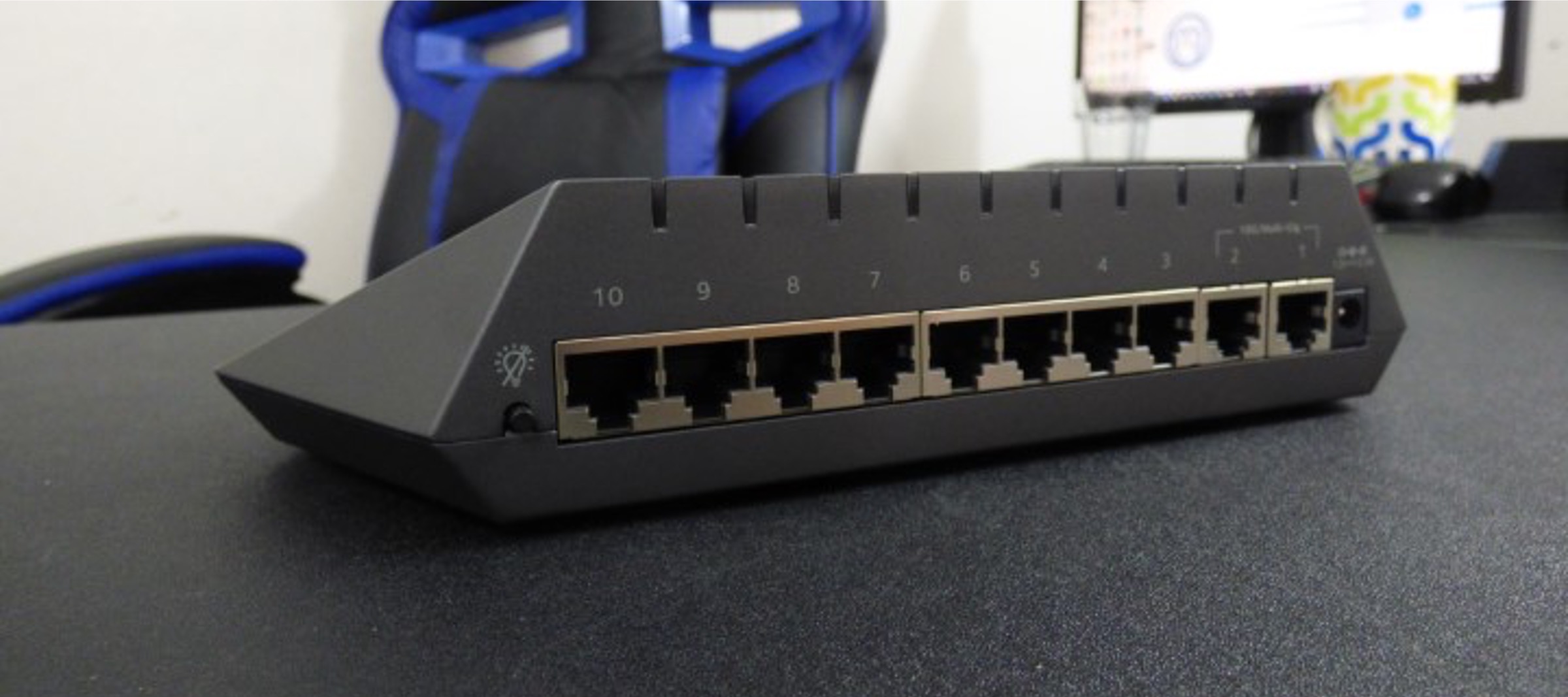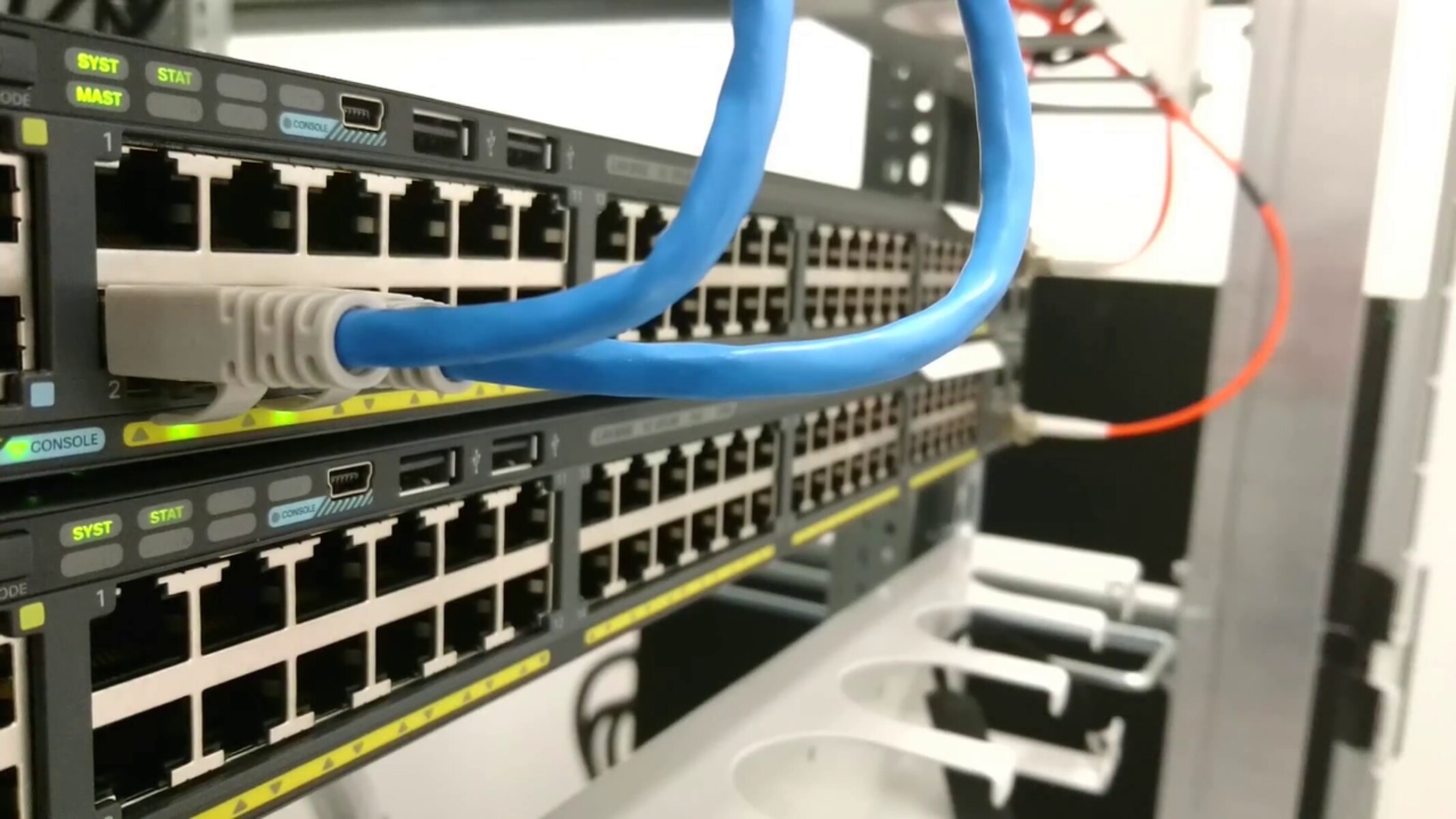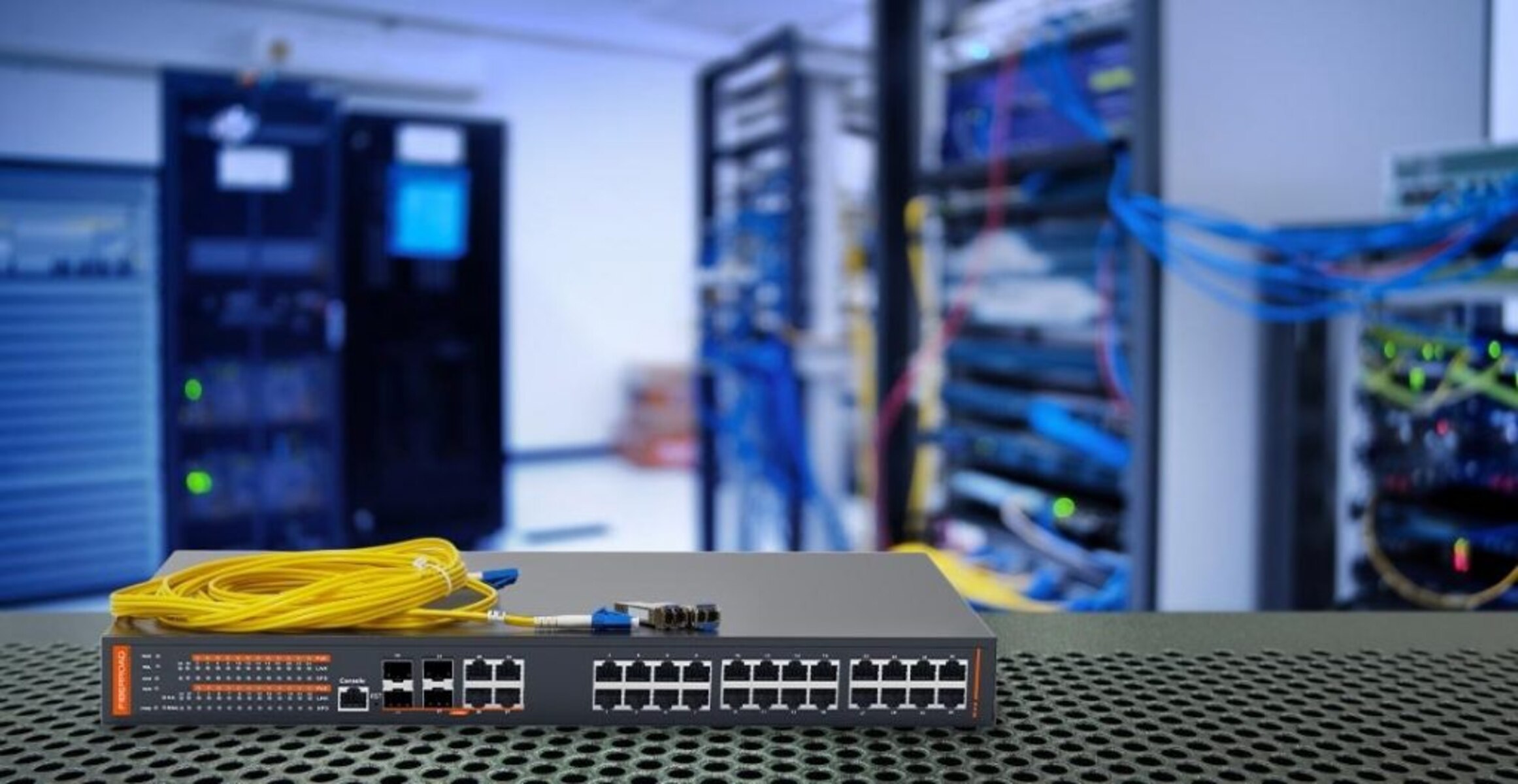Introduction
What Is Network Switch QoS?
Network switches are indispensable components of modern computer networks, facilitating the seamless transfer of data between devices. Quality of Service (QoS) plays a pivotal role in optimizing network performance and ensuring the efficient delivery of data packets. In this article, we will delve into the intricacies of QoS as it pertains to network switches, exploring its significance, underlying mechanisms, and implementation strategies.
The effective management of network traffic is crucial for maintaining a smooth and reliable communication infrastructure. QoS empowers network administrators to prioritize certain types of data, such as voice or video transmissions, over others, thereby enhancing the overall user experience. By mitigating latency, minimizing packet loss, and regulating bandwidth allocation, QoS enables networks to operate at peak efficiency, even during periods of high demand.
Understanding the fundamentals of QoS in the context of network switches is essential for IT professionals and businesses seeking to optimize their network performance. This article aims to demystify QoS, shedding light on its role in network switch functionality and equipping readers with the knowledge needed to harness its benefits effectively.
As we navigate through the intricacies of QoS in network switches, we will explore its underlying principles, the various mechanisms employed to enforce QoS, and the best practices for implementing QoS in diverse networking environments. By the end of this exploration, readers will have a comprehensive understanding of how QoS contributes to the seamless operation of network switches and the pivotal role it plays in sustaining high-performance networking infrastructures.
What is QoS?
Quality of Service (QoS) in the realm of networking refers to the set of techniques and technologies designed to manage and prioritize network traffic effectively. It encompasses a range of strategies aimed at optimizing the transmission of data packets, ensuring that critical applications receive the necessary resources to operate efficiently. QoS enables network administrators to allocate bandwidth, minimize latency, and mitigate packet loss, thereby enhancing the overall user experience and maintaining consistent network performance.
At its core, QoS revolves around the concept of traffic differentiation, allowing network devices to distinguish between various types of data and assign priority levels accordingly. This differentiation is instrumental in guaranteeing the seamless delivery of time-sensitive applications, such as voice and video transmissions, while preventing non-critical traffic from impeding essential network operations.
QoS mechanisms are designed to address the challenges posed by network congestion, varying levels of traffic, and the diverse requirements of different applications. By implementing QoS, network administrators can enforce policies that govern how bandwidth is allocated, ensuring that mission-critical applications receive the necessary resources to function optimally, even in high-traffic scenarios.
Moreover, QoS plays a pivotal role in enabling networks to adapt to dynamic conditions, such as fluctuations in demand and the emergence of latency-sensitive applications. By employing QoS mechanisms, network switches can prioritize real-time traffic, allocate resources based on predefined rules, and maintain a consistent level of service across the network, irrespective of the prevailing conditions.
Ultimately, QoS serves as a foundational element in modern networking, empowering organizations to deliver reliable and responsive network services. It forms the bedrock of efficient data transmission, ensuring that critical applications receive the requisite attention while maintaining the integrity of the overall network infrastructure.
Why is QoS important for network switches?
Quality of Service (QoS) holds immense significance for network switches due to its ability to regulate and prioritize network traffic, thereby optimizing the allocation of resources and enhancing the overall performance of the network. Network switches serve as pivotal components in directing data packets to their intended destinations, and QoS plays a crucial role in ensuring that this process occurs efficiently and reliably.
One of the primary reasons why QoS is vital for network switches is its capacity to manage and mitigate network congestion. By prioritizing critical traffic and allocating bandwidth based on predefined rules, QoS mechanisms enable network switches to maintain consistent performance levels, even during periods of high demand. This is particularly crucial in environments where real-time applications, such as voice and video communications, coexist with data-intensive processes, as QoS ensures that latency-sensitive traffic receives preferential treatment.
Moreover, QoS facilitates the seamless integration of diverse applications and services within the network infrastructure. By allowing network administrators to assign priority levels to different types of traffic, QoS ensures that mission-critical applications receive the necessary resources to operate optimally. This, in turn, fosters a responsive and reliable network environment, where essential services are safeguarded from potential disruptions caused by non-critical traffic.
Furthermore, QoS plays a pivotal role in enhancing the user experience by minimizing latency and packet loss, particularly for time-sensitive applications. Network switches equipped with robust QoS capabilities can effectively manage the flow of data packets, ensuring that essential transmissions are delivered promptly and without interference. This is especially pertinent in scenarios where network performance directly impacts user productivity and satisfaction, underscoring the critical role of QoS in sustaining a high-quality networking experience.
Ultimately, the importance of QoS for network switches lies in its capacity to optimize network performance, prioritize critical applications, and maintain a consistent level of service across diverse traffic types. By leveraging QoS mechanisms, network switches can effectively navigate the complexities of modern networking environments, ensuring that essential applications receive the attention they require while upholding the integrity of the overall network infrastructure.
How does QoS work in network switches?
Quality of Service (QoS) functionality in network switches operates through a combination of mechanisms and protocols designed to prioritize and manage network traffic effectively. When data packets traverse a network switch, QoS comes into play to ensure that critical applications receive the necessary resources while maintaining consistent performance levels across the network.
One of the fundamental aspects of QoS in network switches is traffic classification, whereby incoming packets are categorized based on predefined criteria such as source/destination addresses, protocol types, or port numbers. This classification enables the network switch to identify the nature of the traffic and apply QoS policies accordingly, determining the appropriate treatment for each packet based on its assigned priority level.
Once the packets are classified, QoS employs queuing and scheduling mechanisms to manage their transmission through the network switch. Differentiated queuing allows packets to be placed in separate queues based on their priority, ensuring that high-priority traffic is processed and transmitted ahead of lower-priority data. Additionally, scheduling algorithms dictate the order in which packets are forwarded, further optimizing the allocation of resources and minimizing delays for critical applications.
Another crucial aspect of QoS in network switches is the implementation of traffic shaping and policing mechanisms. Traffic shaping regulates the flow of data packets to adhere to predefined bandwidth limits, preventing bursts of traffic from overwhelming the network and enabling a more consistent transmission rate. On the other hand, traffic policing enforces compliance with QoS policies by monitoring and controlling the rate of incoming traffic, discarding packets that exceed specified thresholds to maintain the integrity of the network’s performance.
Furthermore, QoS in network switches encompasses the use of prioritization techniques such as Differentiated Services Code Point (DSCP) and Class of Service (CoS) markings. These mechanisms allow network administrators to assign specific priority levels to different types of traffic, ensuring that critical applications receive preferential treatment in terms of bandwidth allocation and transmission precedence.
Overall, QoS in network switches functions through a multi-faceted approach, encompassing traffic classification, queuing and scheduling, traffic shaping and policing, as well as prioritization mechanisms. By leveraging these techniques, network switches can effectively manage and prioritize network traffic, ensuring that critical applications receive the necessary resources while maintaining consistent and reliable network performance.
Different QoS mechanisms in network switches
Network switches employ a variety of Quality of Service (QoS) mechanisms to manage and prioritize network traffic, ensuring that critical applications receive the necessary resources while maintaining optimal network performance. These mechanisms encompass a range of techniques and protocols designed to regulate the flow of data packets and enforce QoS policies across the network infrastructure.
One of the primary QoS mechanisms utilized in network switches is traffic classification, which involves the categorization of data packets based on specific criteria such as source/destination addresses, protocol types, or Layer 4 port numbers. This classification enables the network switch to differentiate between various types of traffic and apply QoS policies accordingly, ensuring that critical applications receive preferential treatment in terms of bandwidth allocation and transmission precedence.
Queuing and scheduling mechanisms form another essential component of QoS in network switches. Differentiated queuing allows packets to be placed in separate queues based on their assigned priority levels, ensuring that high-priority traffic is processed and transmitted ahead of lower-priority data. Additionally, scheduling algorithms dictate the order in which packets are forwarded, optimizing the allocation of resources and minimizing delays for critical applications.
Traffic shaping and policing mechanisms play a crucial role in regulating the flow of data packets within network switches. Traffic shaping controls the rate of data transmission to adhere to predefined bandwidth limits, preventing sudden surges in traffic from overwhelming the network and ensuring a more consistent transmission rate. On the other hand, traffic policing monitors incoming traffic to enforce compliance with QoS policies, discarding packets that exceed specified thresholds to maintain the integrity of the network’s performance.
Furthermore, network switches leverage prioritization techniques such as Differentiated Services Code Point (DSCP) and Class of Service (CoS) markings to assign specific priority levels to different types of traffic. By incorporating these markings into packet headers, network administrators can ensure that critical applications receive preferential treatment in terms of bandwidth allocation and transmission precedence, thereby optimizing the overall delivery of network services.
Overall, the diverse QoS mechanisms employed in network switches work in tandem to manage and prioritize network traffic effectively, ensuring that critical applications receive the necessary resources while maintaining consistent and reliable network performance. By leveraging these mechanisms, network switches can navigate the complexities of modern networking environments and uphold the quality of service demanded by today’s diverse range of applications and services.
Implementing QoS in network switches
Implementing Quality of Service (QoS) in network switches involves a strategic approach to managing and prioritizing network traffic, ensuring that critical applications receive the necessary resources while maintaining consistent and reliable network performance. The process of implementing QoS encompasses a series of steps and best practices aimed at optimizing the delivery of data packets and upholding the quality of service across the network infrastructure.
One of the initial steps in implementing QoS in network switches involves the identification and classification of network traffic. Network administrators must delineate the types of traffic traversing the network, categorizing them based on their criticality and latency sensitivity. This classification forms the foundation for applying QoS policies and prioritizing traffic based on predefined criteria.
Once the traffic has been classified, network switches utilize queuing and scheduling mechanisms to manage the transmission of data packets. Differentiated queuing allows packets to be placed in separate queues based on their priority levels, ensuring that high-priority traffic is processed and transmitted ahead of lower-priority data. Scheduling algorithms further optimize the order in which packets are forwarded, minimizing delays and ensuring the efficient allocation of resources.
Furthermore, the implementation of traffic shaping and policing mechanisms is essential for enforcing QoS policies within network switches. Traffic shaping regulates the flow of data packets to adhere to predefined bandwidth limits, preventing sudden surges in traffic from overwhelming the network and maintaining a consistent transmission rate. Traffic policing monitors incoming traffic, discarding packets that exceed specified thresholds to uphold the integrity of the network’s performance.
Network administrators also leverage prioritization techniques such as Differentiated Services Code Point (DSCP) and Class of Service (CoS) markings to assign specific priority levels to different types of traffic. By incorporating these markings into packet headers, network switches can ensure that critical applications receive preferential treatment in terms of bandwidth allocation and transmission precedence, optimizing the overall delivery of network services.
Ultimately, the successful implementation of QoS in network switches hinges on the alignment of QoS policies with the specific requirements and demands of the network environment. By strategically configuring QoS mechanisms and prioritizing critical applications, network administrators can optimize network performance, mitigate latency, and ensure the seamless delivery of diverse applications and services across the network infrastructure.
Conclusion
Quality of Service (QoS) stands as a cornerstone of network performance optimization, particularly within the context of network switches. The intricate mechanisms and protocols underpinning QoS play a pivotal role in managing and prioritizing network traffic, ensuring that critical applications receive the necessary resources while maintaining consistent and reliable performance across the network infrastructure.
As network administrators navigate the complexities of modern networking environments, the significance of QoS in network switches becomes increasingly pronounced. By leveraging traffic classification, queuing and scheduling, traffic shaping and policing, as well as prioritization techniques, network switches can effectively manage the flow of data packets, mitigate latency, and uphold the quality of service demanded by a diverse range of applications and services.
The implementation of QoS in network switches requires a strategic and meticulous approach, encompassing the identification and classification of network traffic, the application of queuing and scheduling mechanisms, and the enforcement of traffic shaping and policing policies. Additionally, the utilization of prioritization techniques such as Differentiated Services Code Point (DSCP) and Class of Service (CoS) markings enables network switches to allocate resources and prioritize traffic based on predefined criteria, ensuring that critical applications receive the necessary attention.
Ultimately, QoS serves as a linchpin in sustaining the seamless operation of network switches, enabling organizations to deliver reliable and responsive network services. By prioritizing critical applications, mitigating network congestion, and minimizing latency, QoS mechanisms in network switches contribute to an optimized and efficient networking environment, where the delivery of diverse applications and services is upheld to the highest standards.
As the landscape of networking continues to evolve, the role of QoS in network switches remains indispensable, guiding the effective management and prioritization of network traffic to meet the diverse demands of modern applications and services. By embracing the principles and best practices of QoS, network administrators can navigate the complexities of network performance optimization, ensuring that their network switches operate at peak efficiency, even amidst the dynamic and demanding conditions of contemporary networking environments.

























